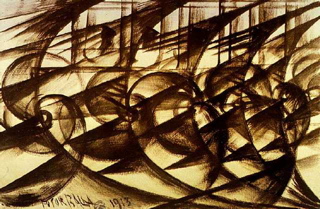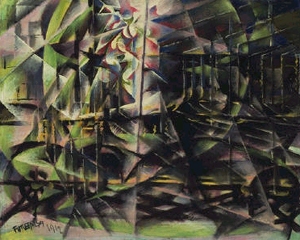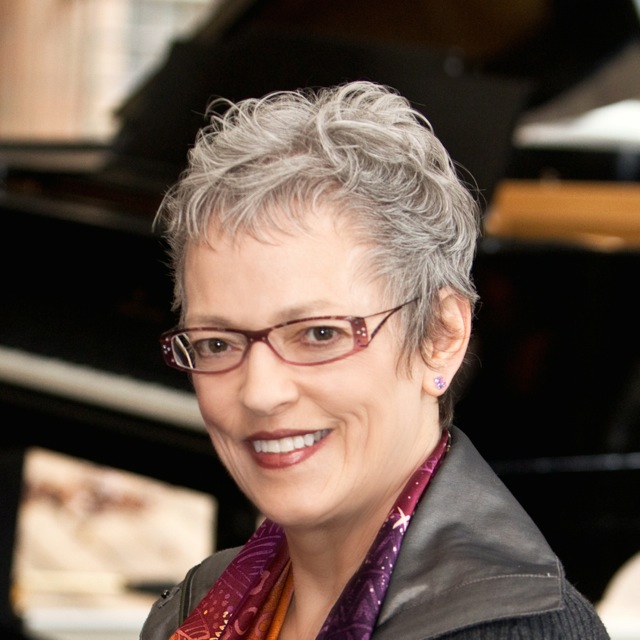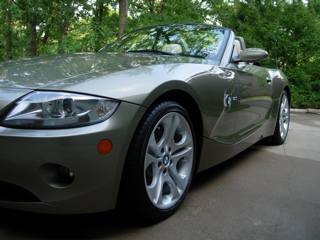cindy mctee
FINISH LINE
for wind symphony
2006
7 minutes
Finish Line is a seven-minute work originally commissioned by the Amarillo Symphony Guild in honor of their fiftieth anniversary. It was premièred on March 24, 2006 by the Amarillo Symphony Orchestra, James Setapen, Music Director. The wind symphony version was commissioned by a consortium of ensembles and premièred on May 20, 2006 by the University of Washington Wind Symphony, Timothy Salzman, conductor.
 |
 |
 |
 |
1 Piccolo
2 Flutes
2 Oboes
English Horn
Eb Clarinet
3 Clarinets in Bb
Bass Clarinet
Bb Contrabass Clarinet
(Eb Contra Alto Clarinet
may be used
as a substitution for Bb
Contrabass Clarinet)
2 Bassoons
Contrabassoon
2 Alto Saxophones
Tenor Saxophone
Baritone Saxophone
4 Horns
3 Trumpets in Bb
3 Trombones
Euphonium
Tuba
Contrabass
Timpani
4 Percussion
PianoPercussion 1
4 Brake Drums or Metal Plates
Suspended Cymbal
(Chinese preferred)
Guiro
Vibraphone
Shaker
Percussion 2
Orchestra Bells
Triangle
Castanets
Ratchet
Large Suspended Cymbal
Percussion 3
Vibraslap
Tambourine
Woodblock
Bass Drum
Tam-tamPercussion 4
Marimba
for information, perusal materials, sales, or rental, please visit
Finish Line is a seven-minute work originally commissioned by the Amarillo Symphony Guild in honor of their fiftieth anniversary. It was premièred on March 24, 2006 by the Amarillo Symphony Orchestra, James Setapen, Music Director. The wind symphony version was commissioned by a consortium of ensembles and premièred on May 20, 2006 by the University of Washington Wind Symphony, Timothy Salzman, conductor.
Consortium Members:
Illinois State University - Stephen Steele
Indiana University - Stephen Pratt
Indiana University of Pennsylvania - Jack Stamp
Lousiana State University - Frank Wickes and Linda Moorhouse
Messiah College - Bradley Genevro
Pacific Lutheran University - Edwin Powell
Sam Houston State University - Matthew McInturf
Showa Academia Musicae - Shintaro Fukumoto
Southern Methodist University - Jack Delaney
University of Kansas - John P. Lynch and Scott A. Weiss
University of North Texas - Eugene Migliaro Corporon
University of Washington - Timothy SalzmanConsortium coordinator: Andrew Trachsel
Finish Line was inspired by several paintings of Futurist artist, Giacomo Balla, suggesting the transformation of landscape by the passage of a speeding automobile.
Centered in Italy at the beginning of the 20th century, the artistic movement known as Futurism embraced an aesthetic that glorified the speed and power of machines, especially automobiles. The Futurist Manifesto of 1909 by F.T. Marinetti proclaimed that "a racing automobile . . . is more beautiful than the Victory of Samothrace." Is it any wonder, then, that Italy has led the pack in producing finely crafted racing machines noted for their style and grace.I decided to use the work of futurist artist, Giacomo Balla, as a point of departure for the creation of Finish Line and chose several paintings suggesting the transformation of landscape by the passage of a speeding automobile. The title of one work in particular, Abstract Speed + Sound, suggests that Balla sought to render on canvas the whirling noise of the automobile itself.
In Finish Line, the use of repeated fragments (ostinatos), a steady pulse, and a spirited tempo attempt to portray the swirling gestures and mechanized agitation of Balla’s paintings. Multiple points of view (characteristic of futurist art) are represented by the simultaneous presentation of two tempos at the beginning and end of the work, and also by a seamless, temporal transformation process analogous to gear shifting, where the speed, or RPM, of the engine modulates smoothly to a new frequency.
There are also three short sections in Finish Line during which forward momentum and time are slowed down and ultimately suspended. This is achieved by inserting varying amounts of silence between the repetitions of melodic fragments which are therefore heard in ever changing relationships to create a non-linear texture of circles within circles and a dreamlike, hovering, effect.
Italian Futurists were, of course, not the only artists affected by the dawn of the machine age. Russian composer, Igor Stravinsky, is actually the composer credited with having produced the first important piece of “machine music,” the Rite of Spring, its rhythmic pulsations depicting not just prehistoric, ritualistic dance, but also the nervous energy of a modern, mechanized city. There are references to this famous work at the beginning and end of Finish Line.
Pitch structures in this work are derived from both octatonic (8-note) and 12-note scales while the note “A” (for Amarillo) launches the piece in a flurry of percussion.
I completed Finish Line by mid-summer of 2005 and then set out on a 6000-mile road trip, often imagining myself racing through Balla’s paintings. Like Balla, I too delighted in the ability of a speeding automobile to transform time and space, with vast expanses of changing landscape playing like a movie on my windshield. Fasten your seatbelts!
. . . it's back to the races with Cindy McTee's 'Finish Line' (2006), inspired by the futurist paintings of Giacomo Ballo, propelled by minimalist techniques, and relentless in its drive.
Barry Kilpatrick
American Record Guide––––––––––––––––––––––––––––––––––––––
The guild-commissioned piece, sponsored in recognition of its 50th anniversary, opened the concert with a far more contemporary sound than anything that followed. Composer Cindy McTee's work, inspired by the [early 20th-century] art movement called futurism and by her love of fast cars, showed off the symphony as the finely tuned machine it is. The piece had a nicely bracing quality, thanks to some occasional dissonance, clever rhythms and hints of the Doppler effect in the horns. Quite fun.
Chip Chandler
Amarillo Globe-News


